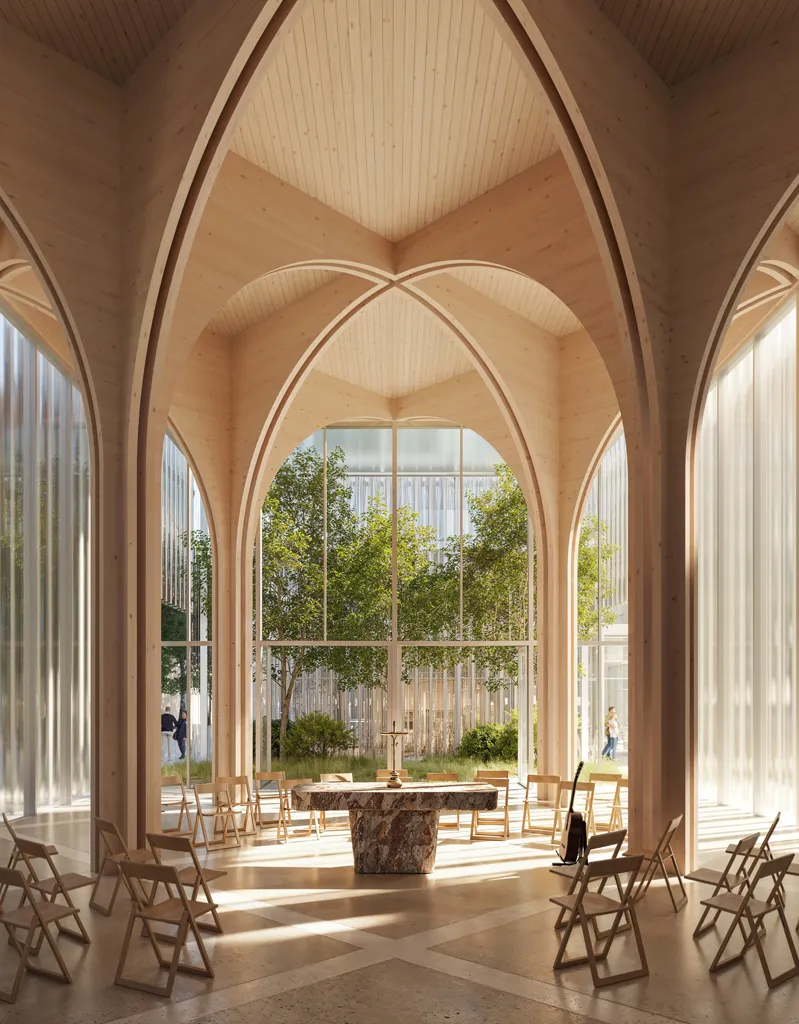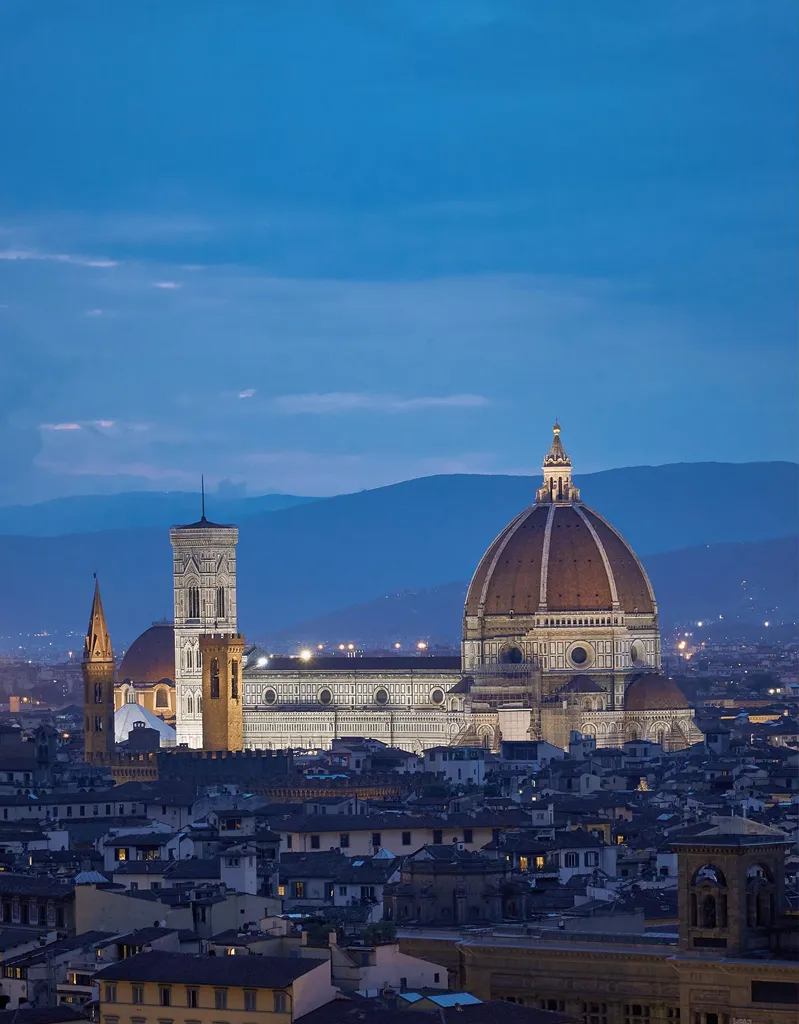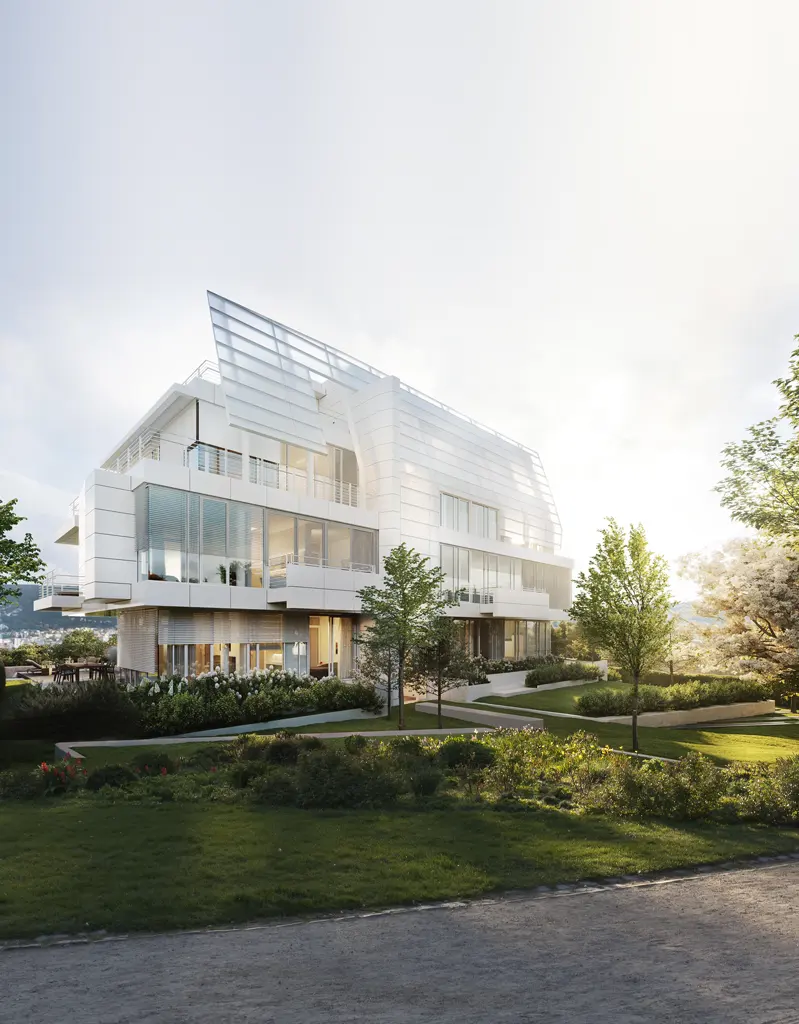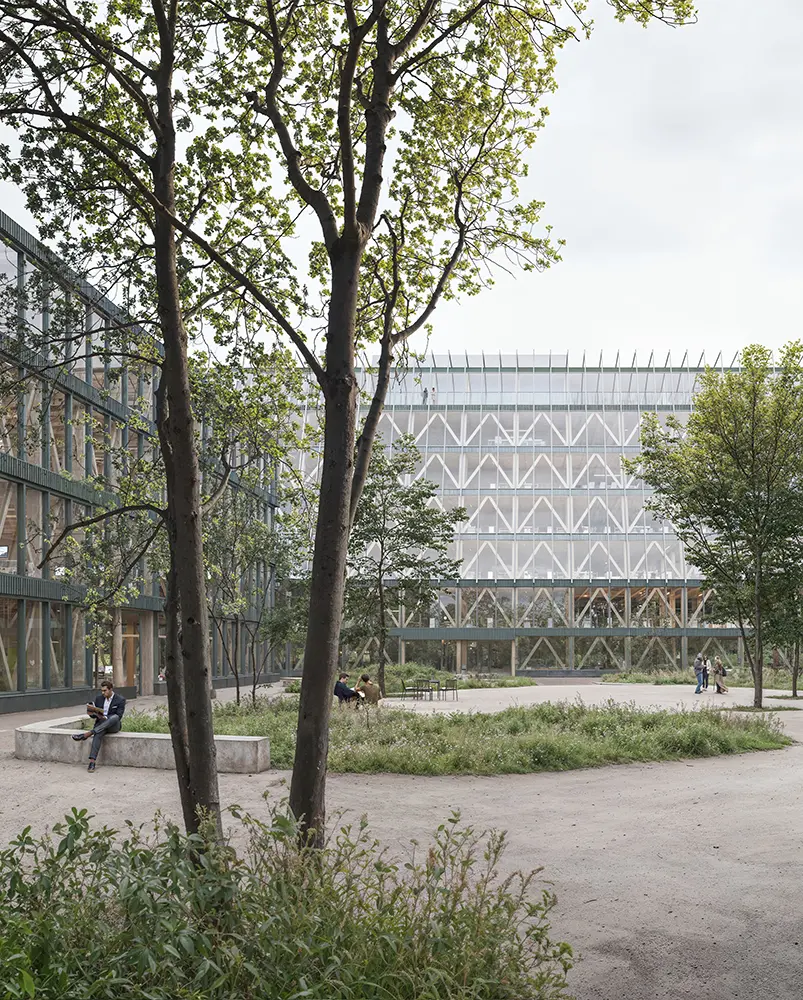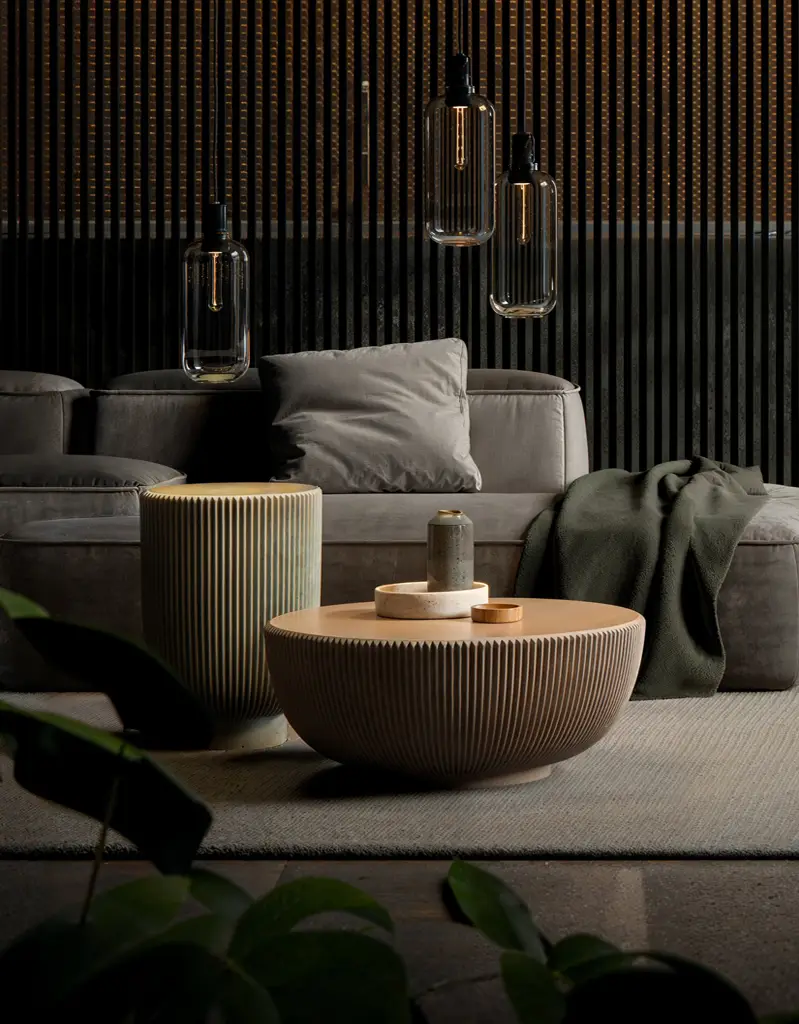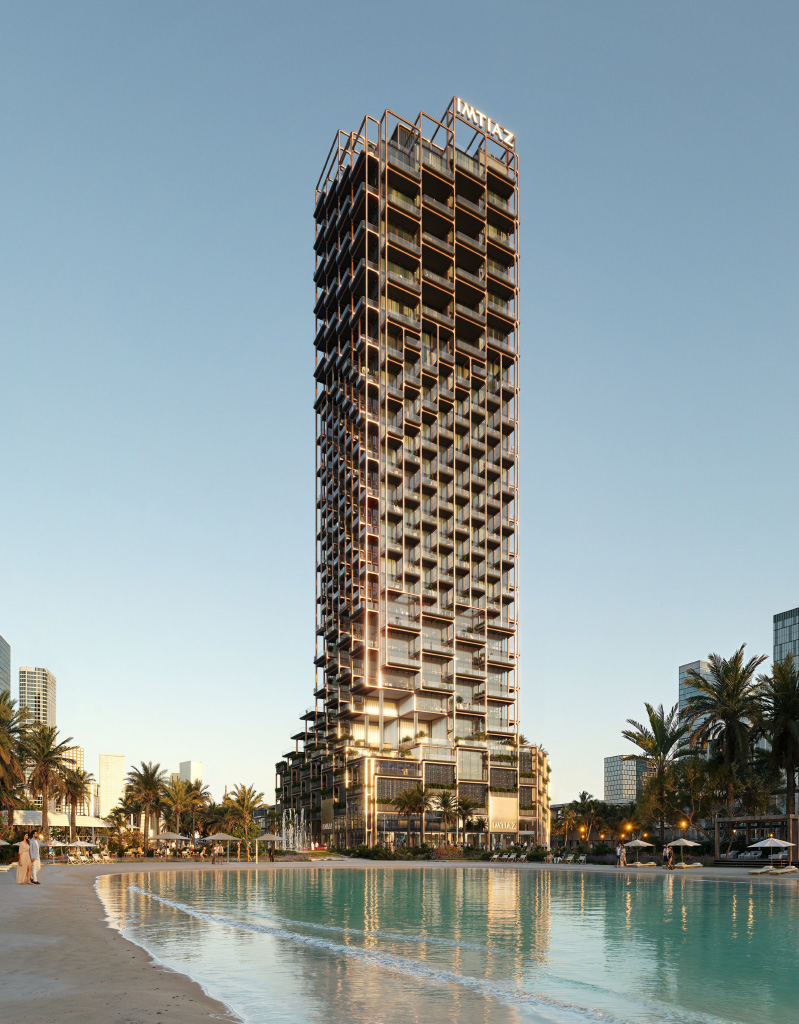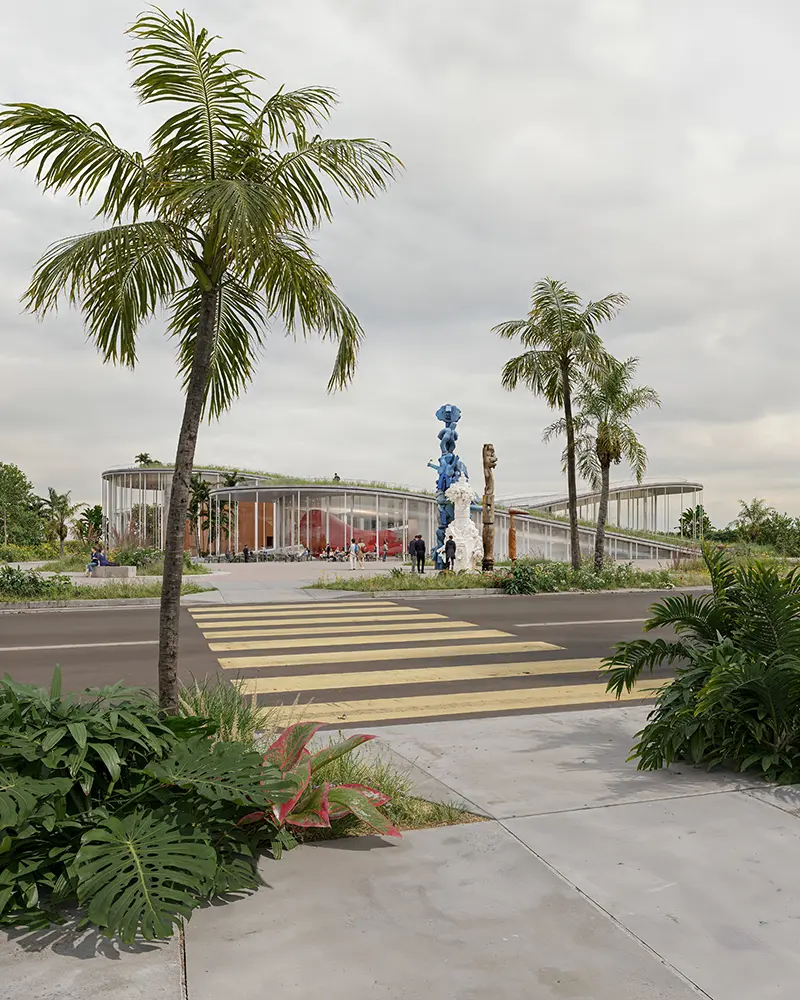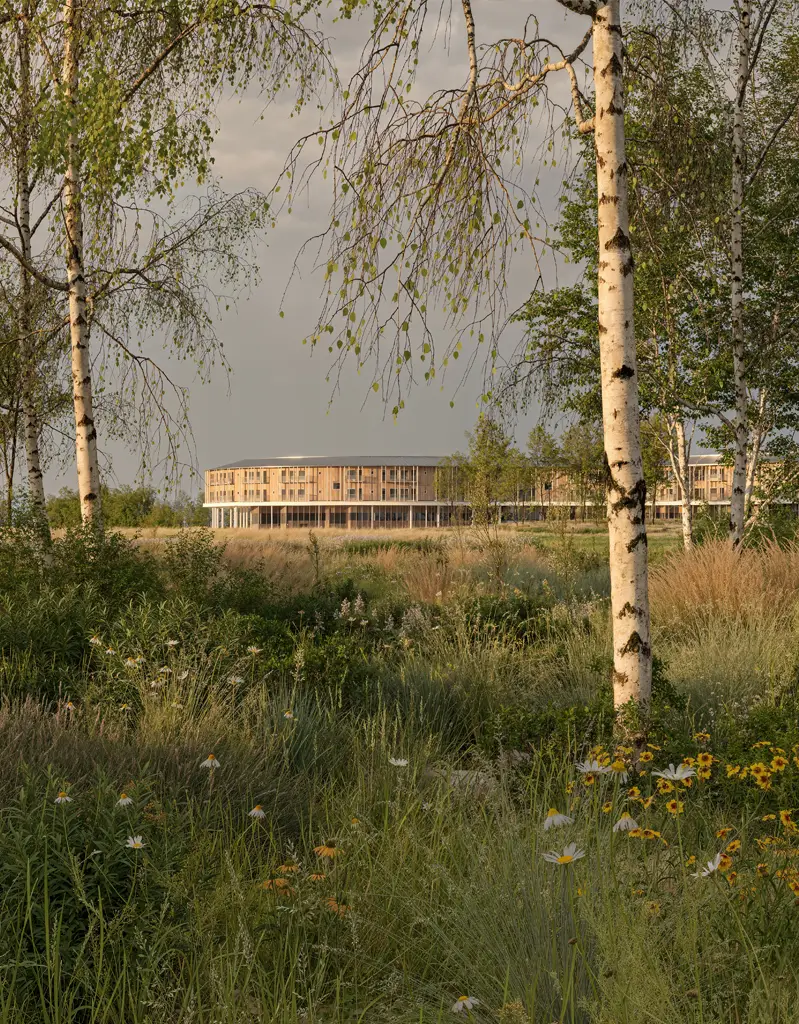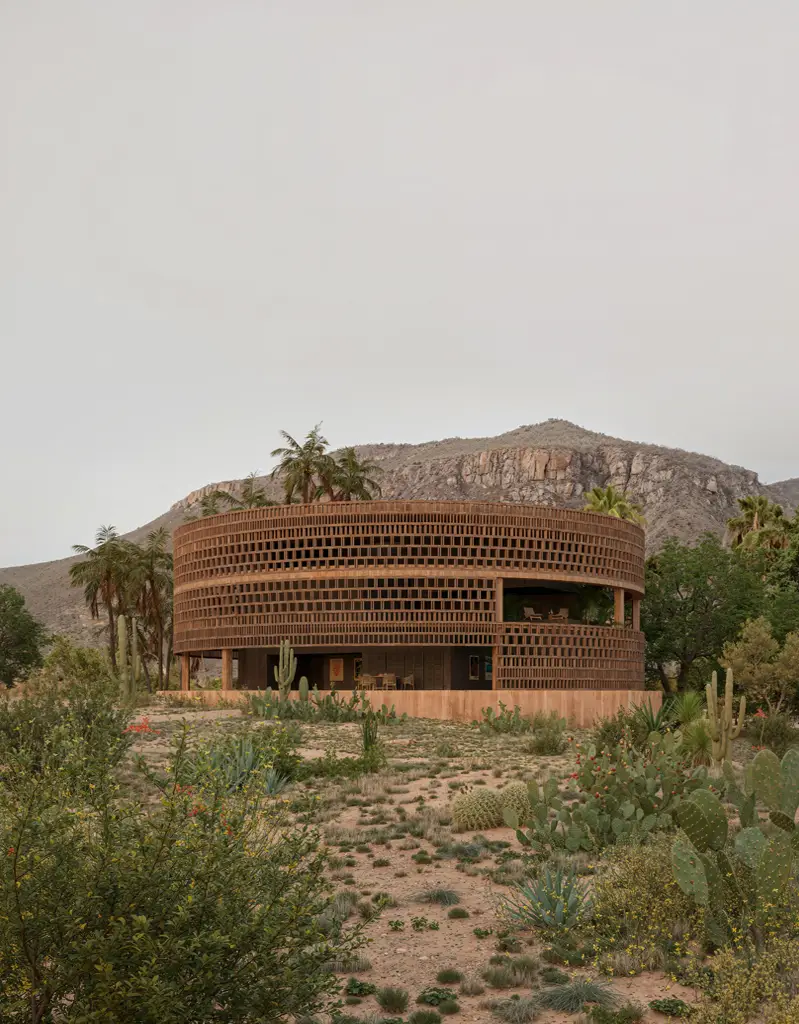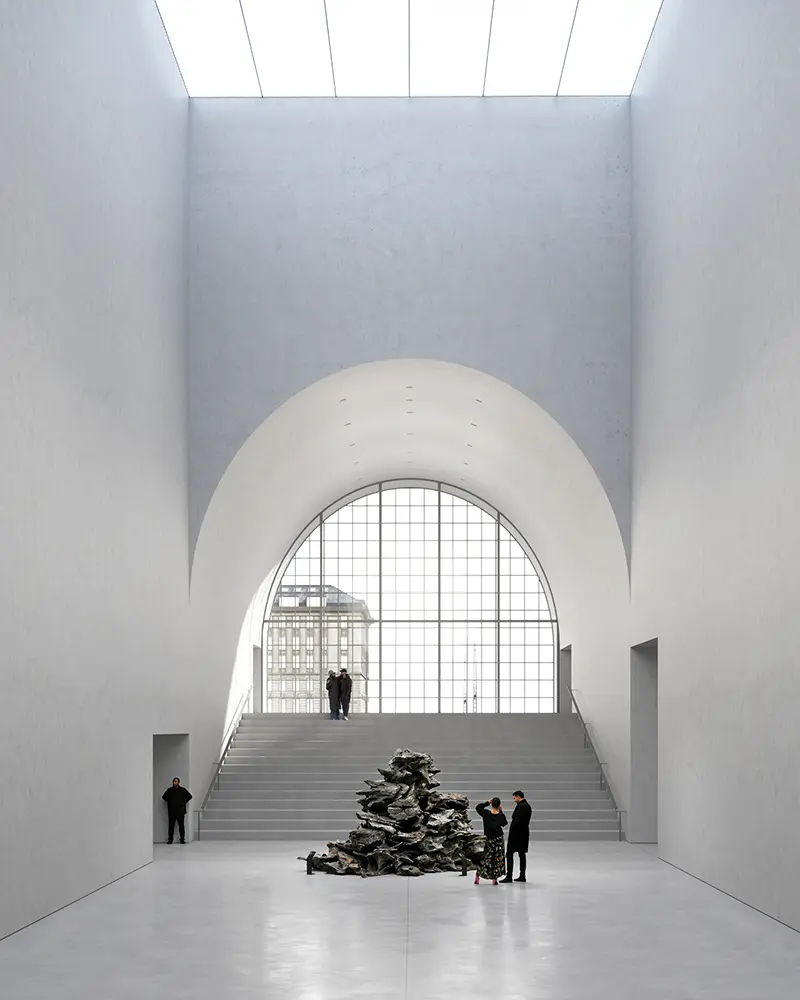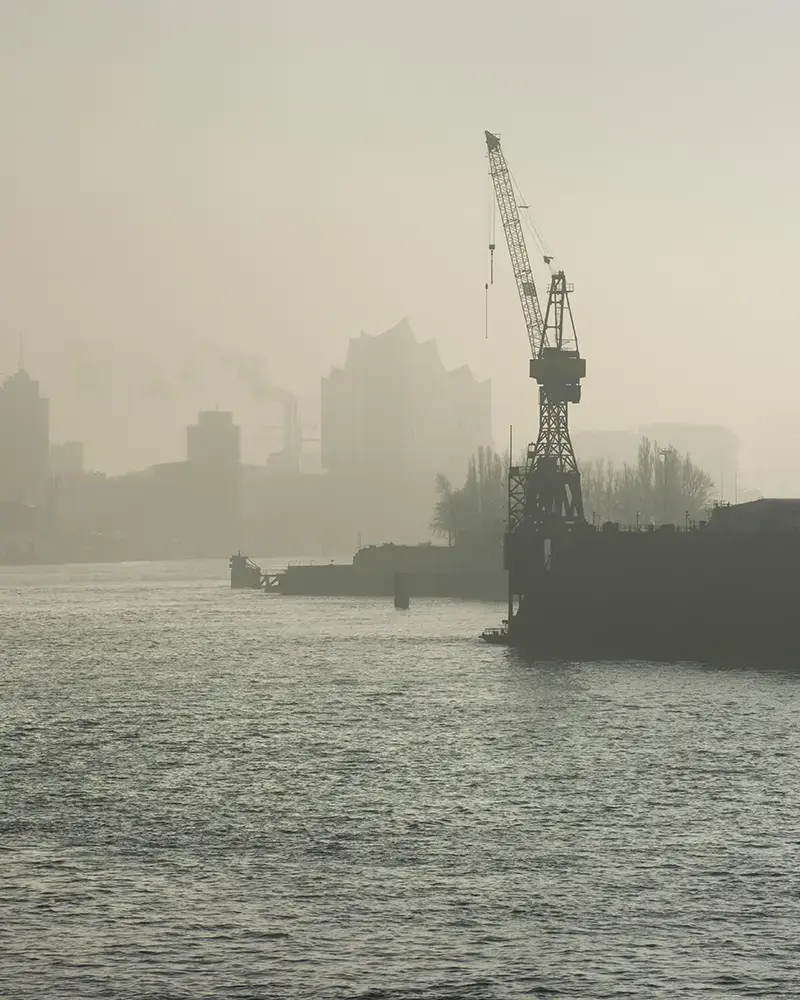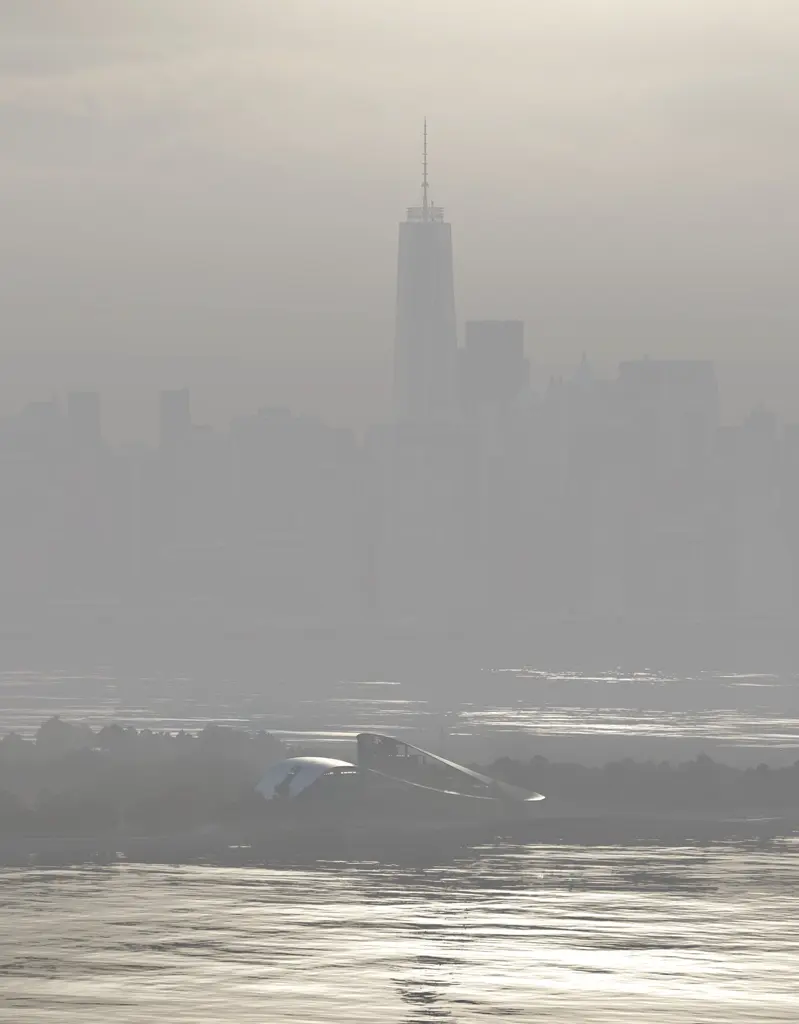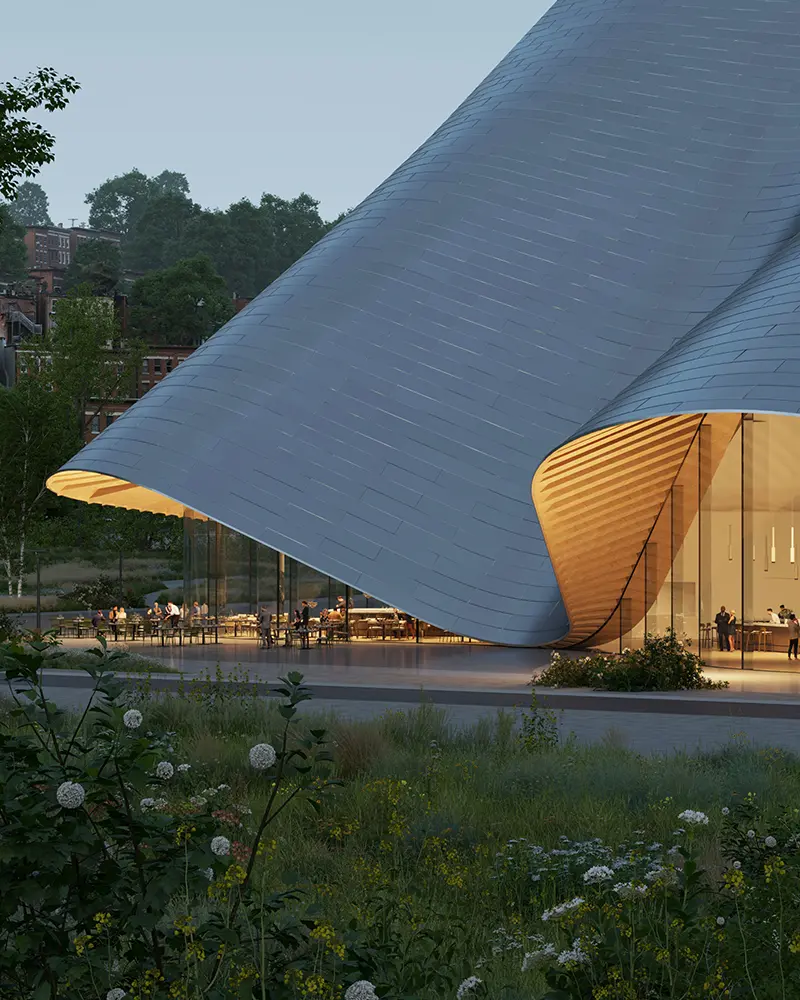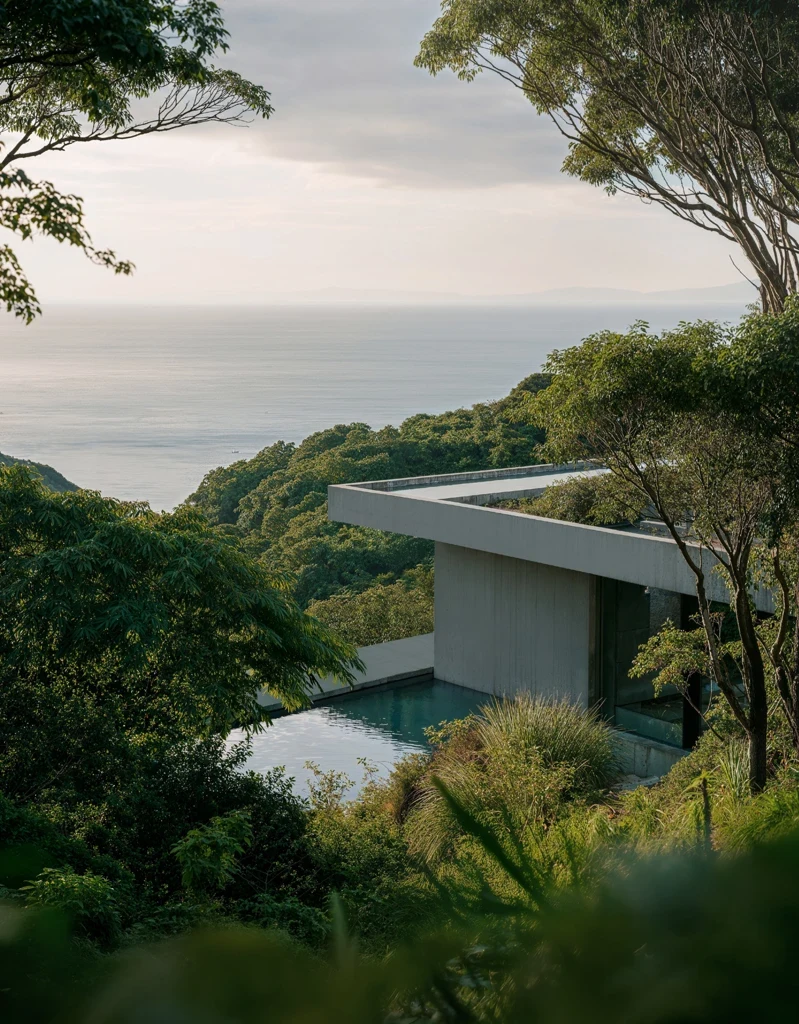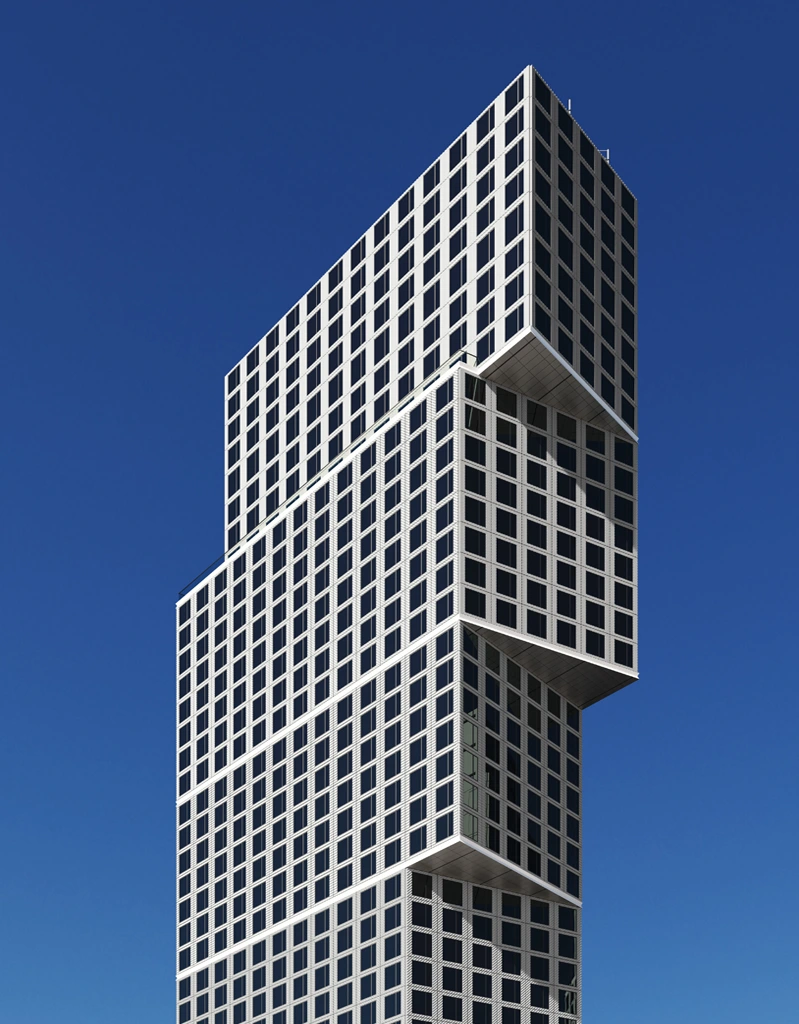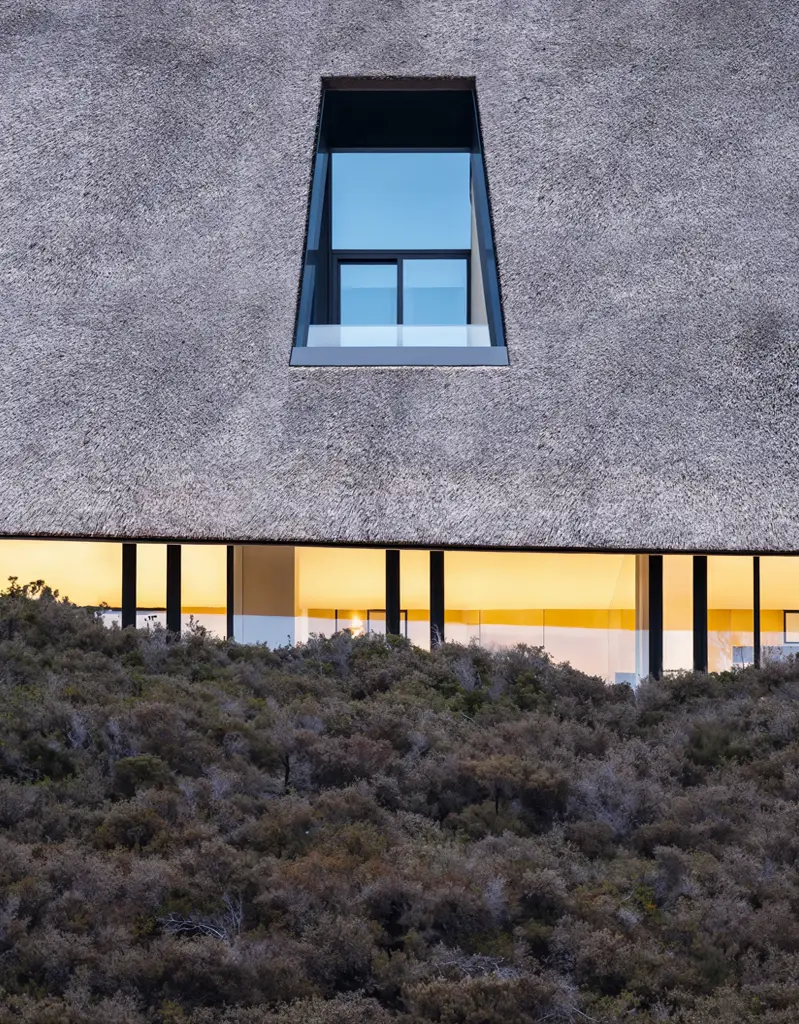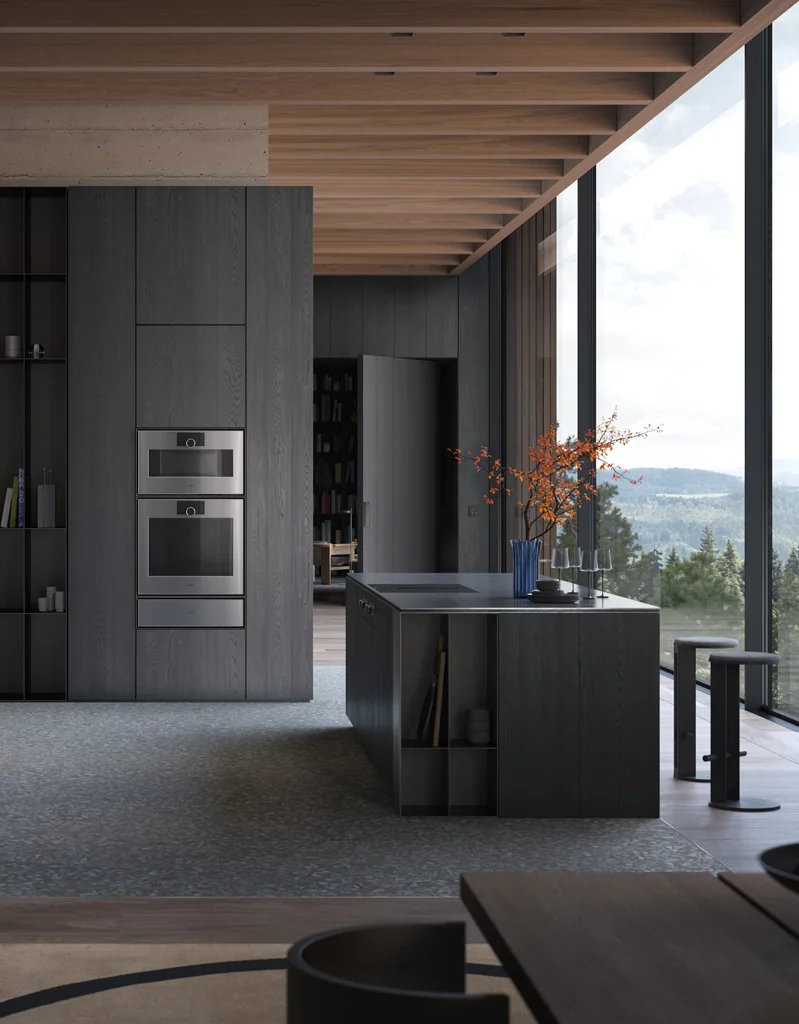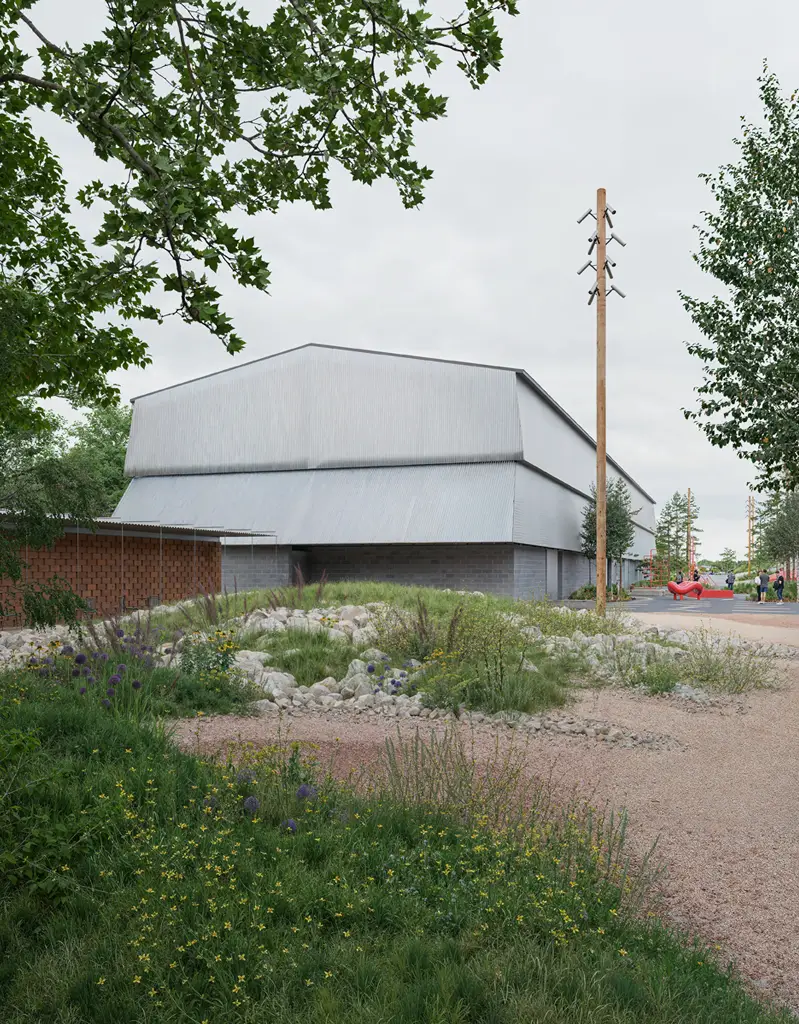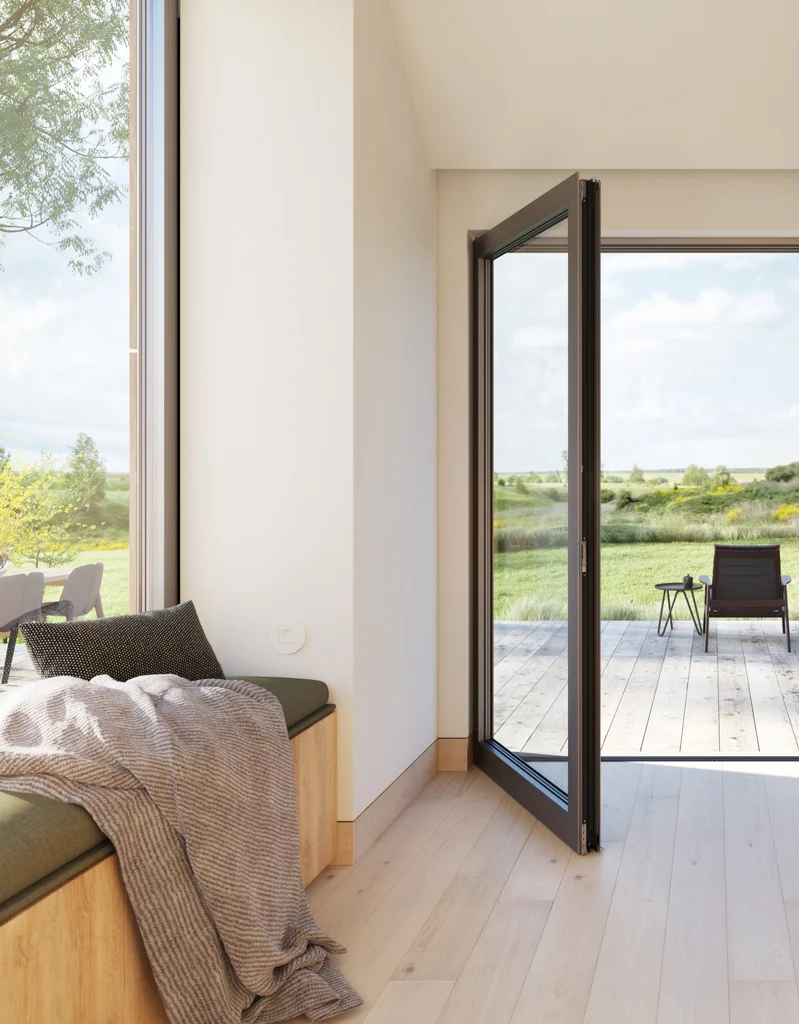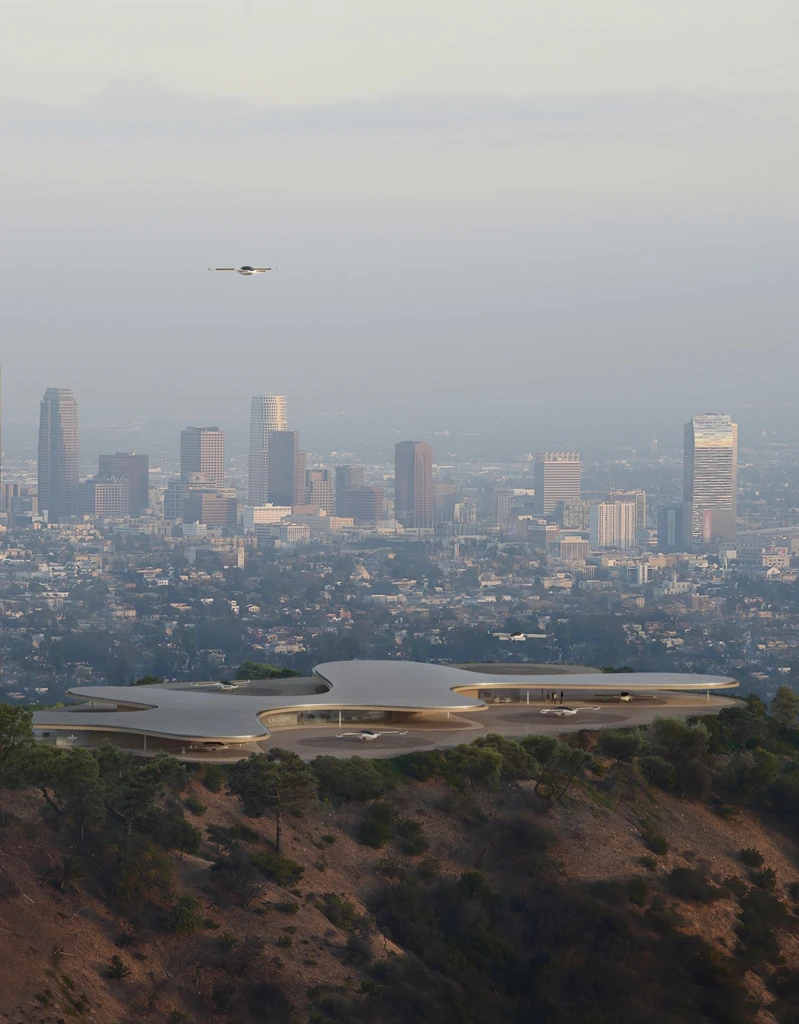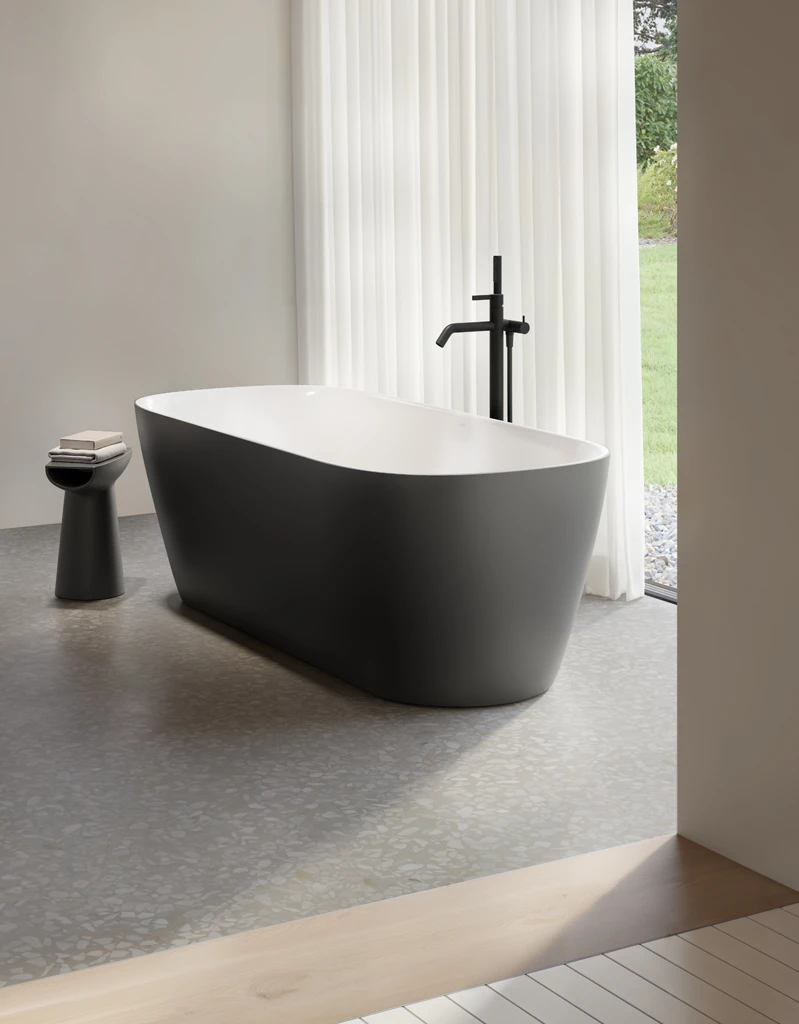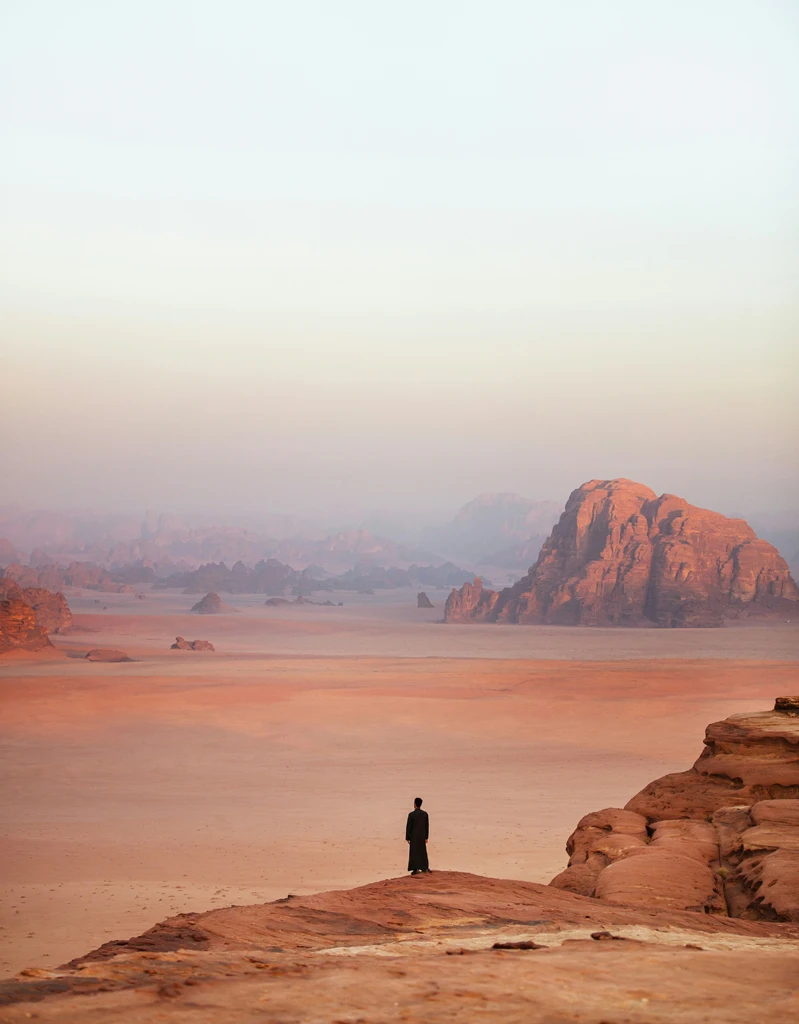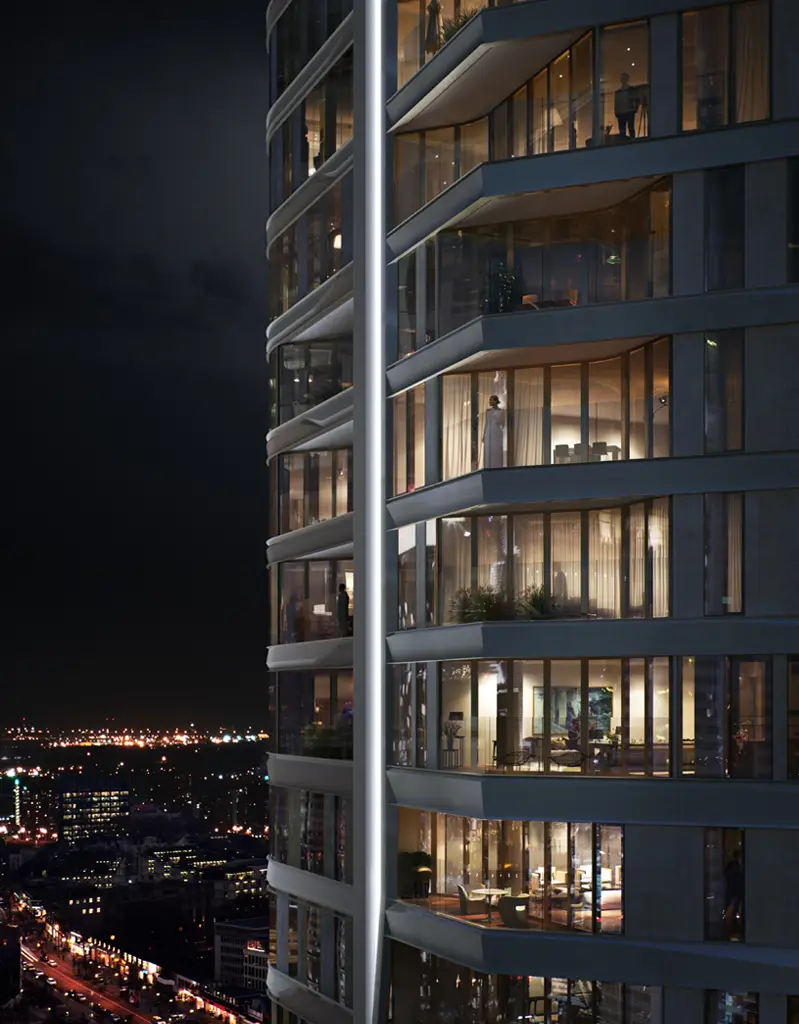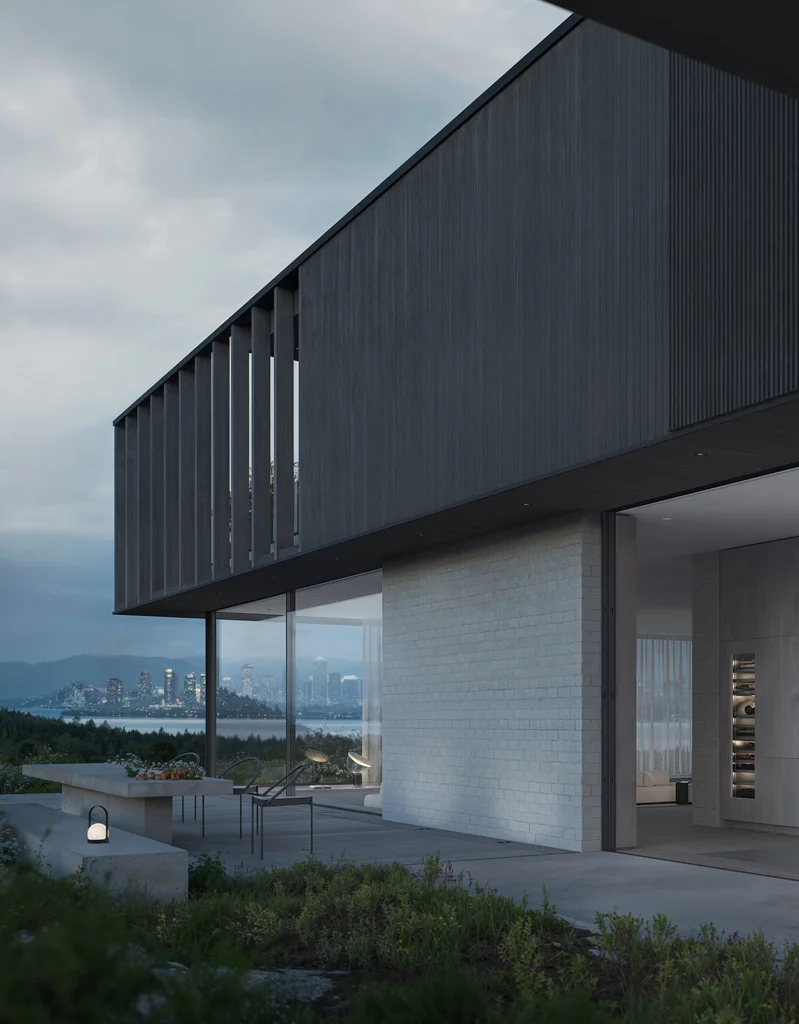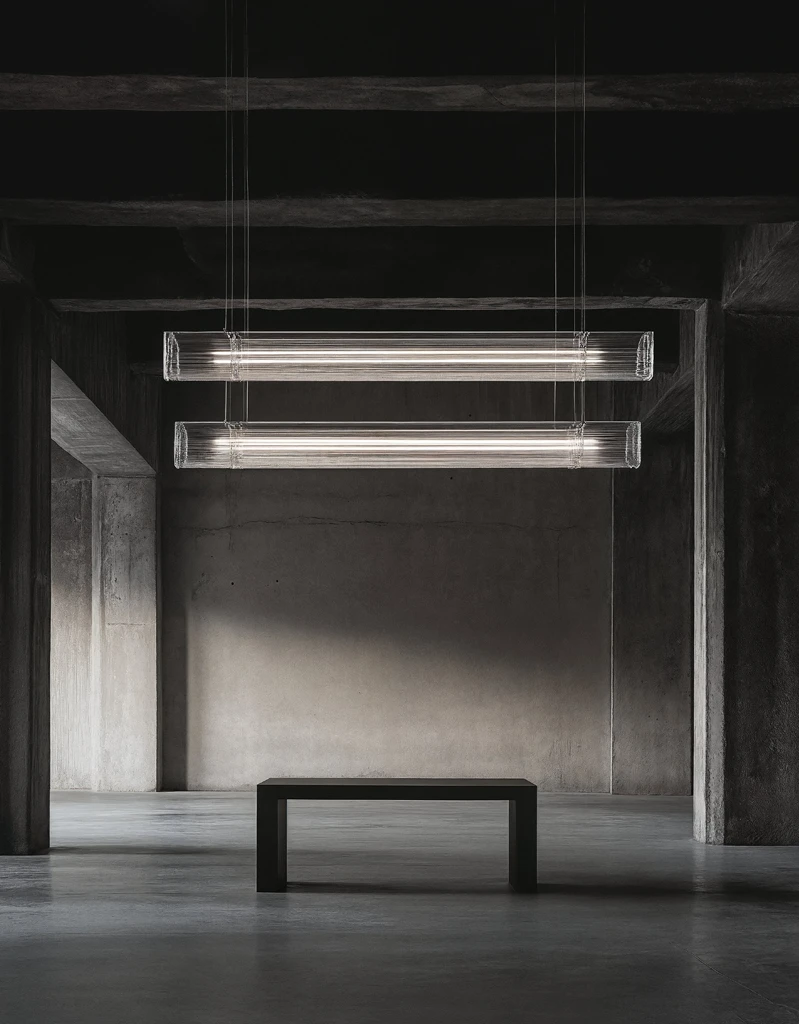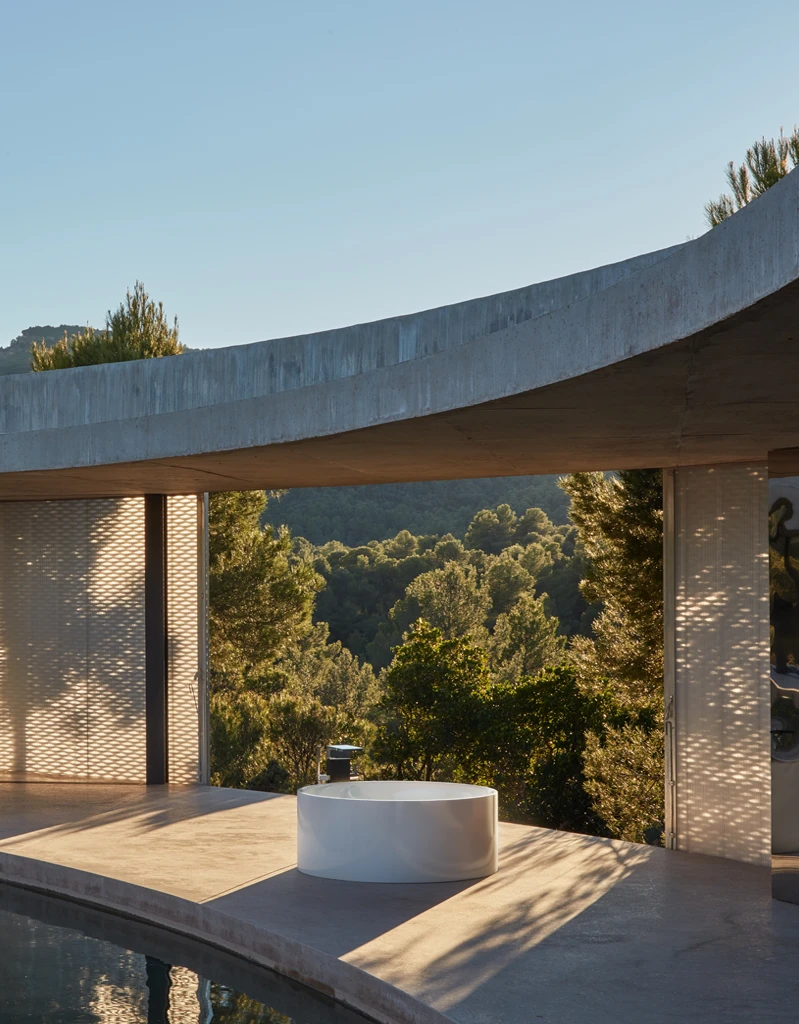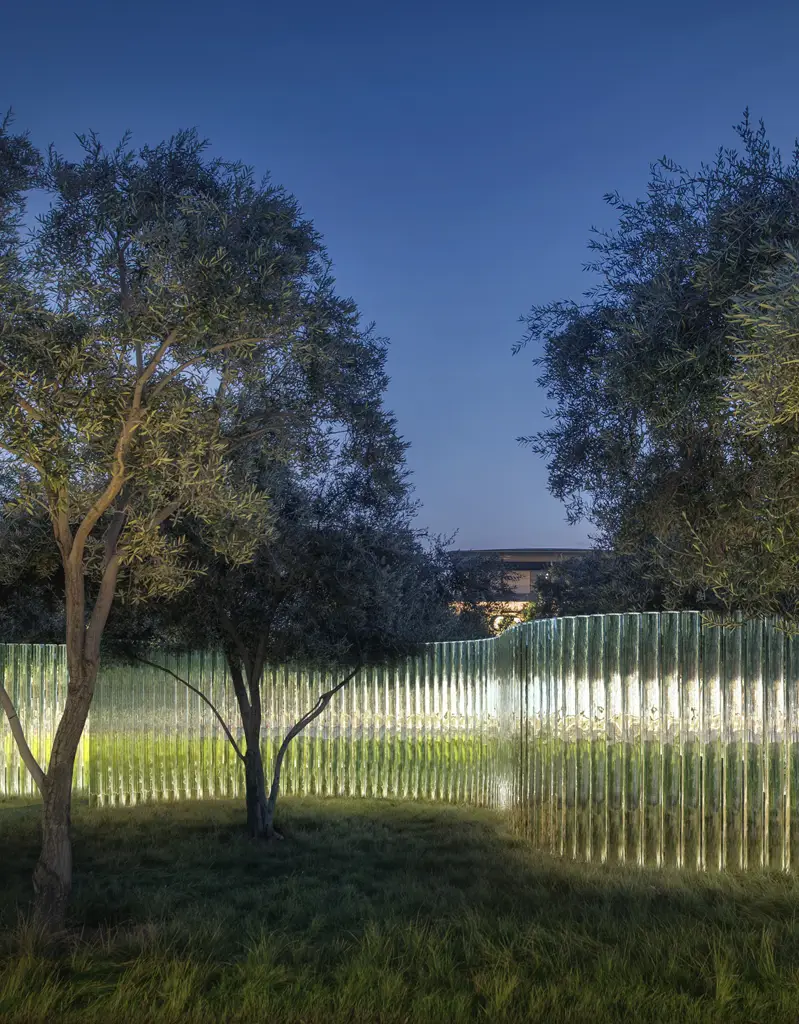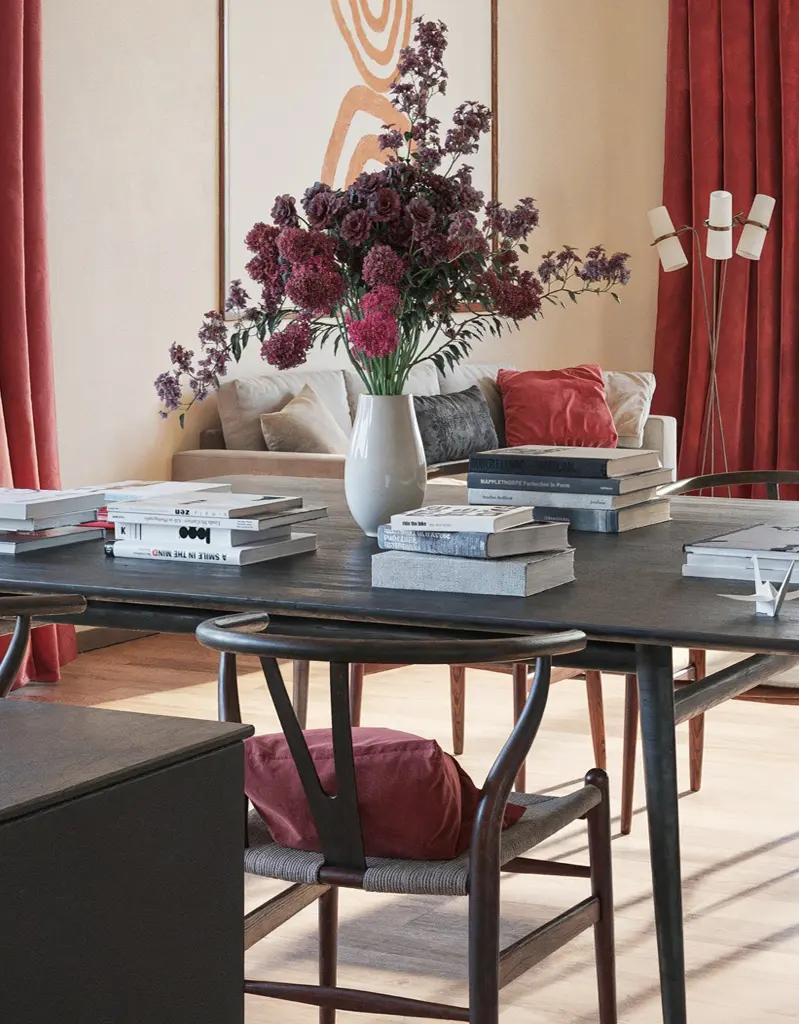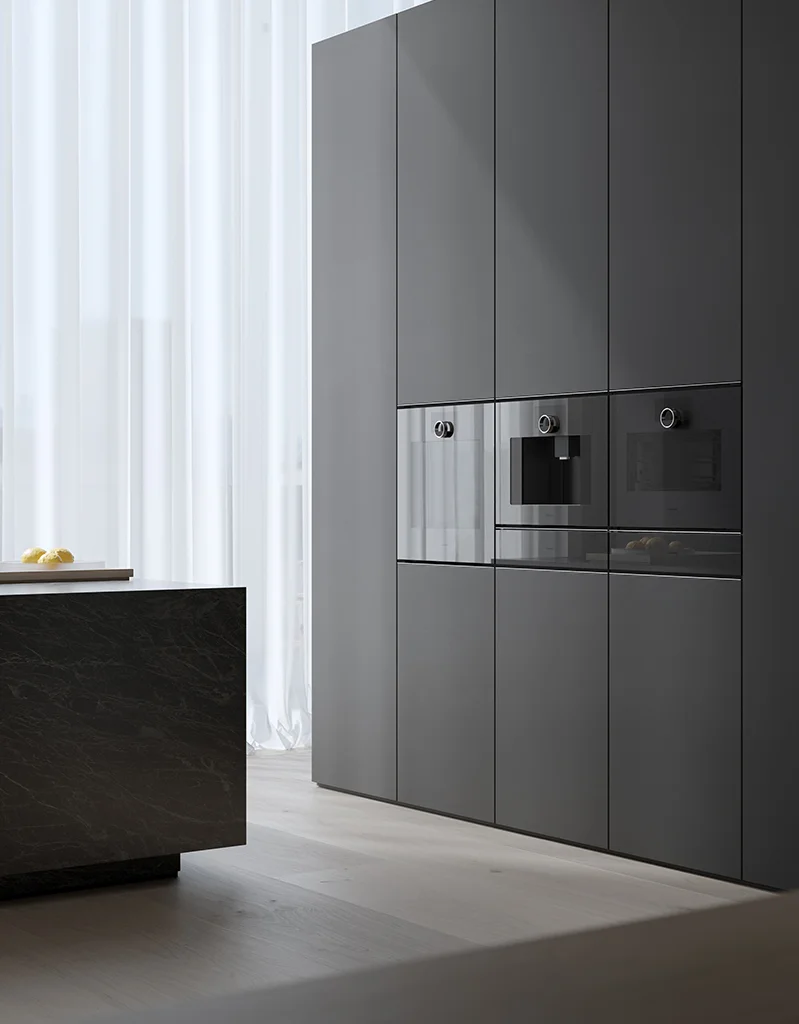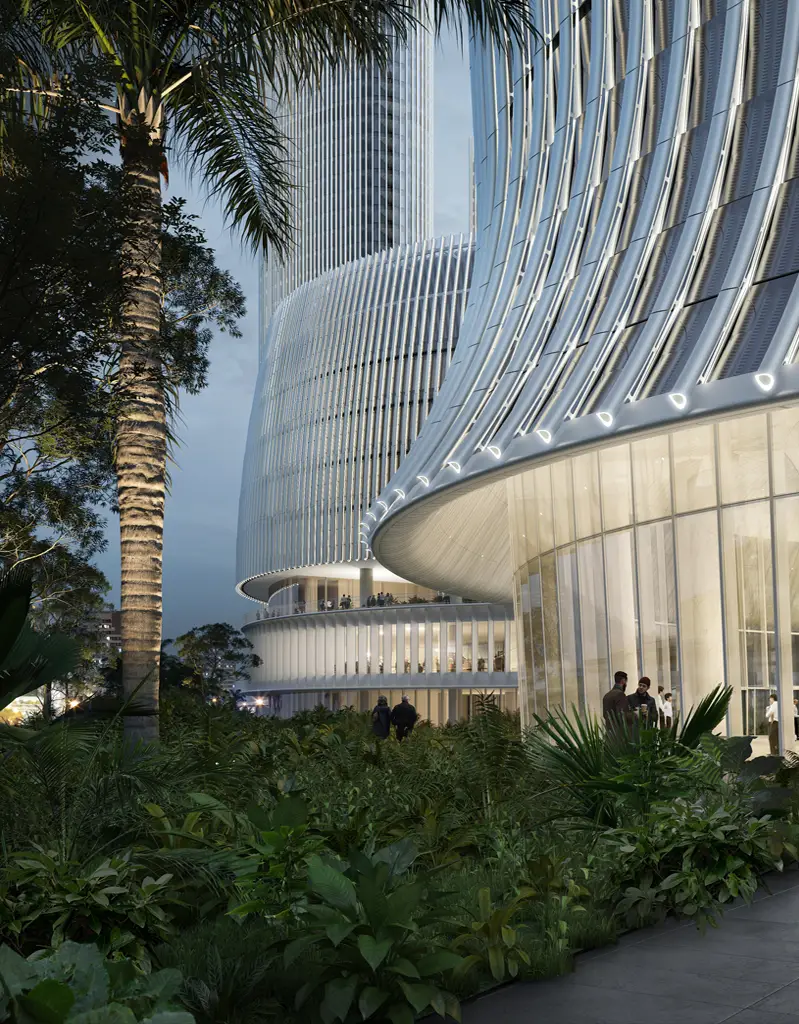
sunshine
Lighting conditions
Lighting is a tool for shaping mood, focus, and narrative in architectural visualization. Each lighting condition tells a different story. Whether soft or sharp, dramatic or understated, the light changes how we read a space and what we feel about it. This series explores six essential lighting types, offering a close look at how each one can be used to support design intent and create compelling, believable images.
Sunshine
Direct sunlight is bold, sharpening edges, deepening shadows, and immediately defining the shape and scale of a building. Used intentionally, sunlit conditions help emphasize the three-dimensional qualities of architectural elements. Strong light and shadow create rhythm, contrast, and focus. It’s also a tool for storytelling by creating a strong highlight on the focus of the image and a dark shadow to help move the eye. Sunshine makes materials pop, making them react differently under hard light and deep shadow. These images tend to feel clear and energizing as long as it is controlled. Too much contrast can overpower a composition, but just enough gives the image clarity. Done well, it helps guide the viewer’s eye and creates a visual hierarchy that supports the architecture.
Direct sunlight is bold, sharpening edges, deepening shadows, and immediately defining the shape and scale of a building. Used intentionally, sunlit conditions help emphasize the three-dimensional qualities of architectural elements. Strong light and shadow create rhythm, contrast, and focus. It’s also a tool for storytelling by creating a strong highlight on the focus of the image and a dark shadow to help move the eye. Sunshine makes materials pop, making them react differently under hard light and deep shadow.










